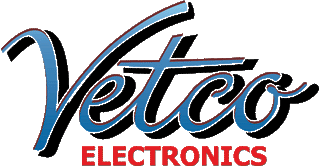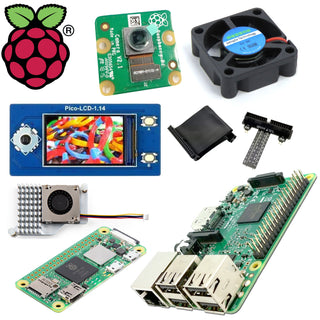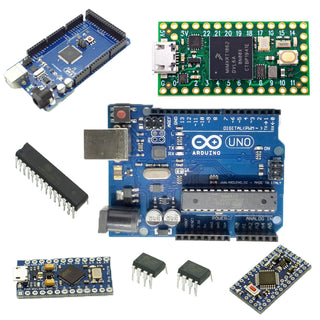
This is a fantastic question that we get here at Vetco quite often.
Depending on how you hook the strips up, the length options are almost limitless. When doing this, you have to consider some logistics.
When determining how many strips you want to connect together, remember that with wire, resistance increases with distance. This is no different with LED strips. Vetco recommends, as a general rule, not to connect more than three complete strips end-to-end without adding in extra, higher gauge power wire or additional power supply units down the line.
Types of LED Strips covered in this article:
-Warm White (waterproof and non-waterproof)
-Cool White (waterproof and non-waterproof)
-RGB Strip (waterproof and non-waterproof)
-Addressable RGB Strips (waterproof and non-waterproof)
Below, I will break down the logistics per type of LED strip that Vetco carries.
Warm White (VETRGBSTPWWT) and Cool White (VETRGBSTPCW) LED strips.
These are the most simple LED strips we carry. Just give them 12 volts direct current and they light up. They care about polarity, but won’t get damaged if you hook them up wrong.
Both of our Warm and Cool White LED strips have 300 LEDs in their 16.4 feet. This adds up to about 1.5 Amps at 12VDC. Which means, when wired in parallel, each strip you add to the string will add the same amperage again. So, two strips would be roughly 3.0 Amps at 12VDC. And 3 strips would be at least 4.5 Amps at 12VDC and so on. Additional strips should have extra supportive power wire or additional power supply units added down the line.
RGB (Red Green Blue) strips. VETRGBSTRIP
These strips are a bit different because, though they have the same number of LED modules (300) in a 16.4 foot roll, they actually have three times the light emitting diodes as regular LED strips. This is because each of the 300 modules on the strip each contain three colors. A red, a blue and a green LED. This means that, when set to white, at full brightness, the RGB strips use almost three times the power as the regular white strips. A 16.4 foot roll of RGB LEDs uses roughly 5 Amps at 12VDC. So connecting two of these strips, end-to-end would result in roughly an 10 to 15 total Amp requirement. Remember that with DC power, there are losses in the line.
If using three RGB strips, Vetco reccomends at least a 10 or 15 AMP 12V DC power supply.
This means that we recommend connecting a maximum of two RGB strips end-to-end. We have seen people do three end-to-end, but we don’t recommend it. Especially if you are using one of the remote control boxes that allow you to do color cycling and flashing patterns. You can check that out here. VUPN6983
And this is the fun one.
Addressable RGB LED strips. VETADDRGB
It should be noted, first and foremost, these are 5 Volt DC strips! Not 12VDC! This is a very common mistake, and will kill your addressable strip very quickly. Not to mention killing your micro controller.
Addressable RGB strips are really cool because they let you control much more than any of the previously mentioned strips. These allow you to individually choose which led is lit, what color it lights up and what brightness it lights up at. Or if it even lights up at all.
This allows advanced lighting patterns, color schemes and designs to be employed.
The individually addressable RGB strips use about 6.5 Amps per 16 feet when at full brightness on the color white at 5VDC.
So the same rule should be followed for the addressable ones as the regular RGB ones. We recommend no more than two consecutive strips connected end-to-end (but in this case you MUST run more power wire to the middle and ends). If you do more, you need to add a separate power bus with higher gauge wire to run the strips down the line, or add additional power supplies down the line. With these strips, the data signal runs through the center wire on all the strips. This wire is okay to consecutively connect end-to-end on as many strips as you want to connect. This is because this wire only carries data. No power. And the best part is that the controller chips in each LED module on the strips repeats and boosts the signal. So there is no signal loss down the line.
Notes:
It should be noted that you should never wire LED strips in series.
It should also be noted that there IS a limit of how many strips you can connect END to END. I wouldn't do more than about two. You need to run additional power wire for the additional strips down the line. The wire in LED strips is VERY thin. You will notice your strip get dimmer or the color change as it goes further down the line. This means that you have connected too many strips "end to end" without supplementary power wire, or you don't have a powerful enough power supply, or both.
If you want to connect more than two regular RGB LED strips through a single controller, you MUST to get a higher wattage/amperage one. We don’t carry them as a normal stock item, but are able to help with special orders. Also, this will likely cause you to need to run supplementary power wire to connect to any strip beyond 2.
You should always use a power supply that is rated at a higher amperage than your project needs. This means that the power supply wouldn’t need to work as hard to do the same job. It will generate less heat and last a lot longer.
If installing LED strips of any type in a permanent installation, we always recommend soldering the strips rather than using clips or other interconnection methods that are less reliable. A great example is: If you are installing RGB strips on your house, high up on the roof, you don’t want to have to keep getting up there to fix clips that came loose or corroded do to oxidation.



